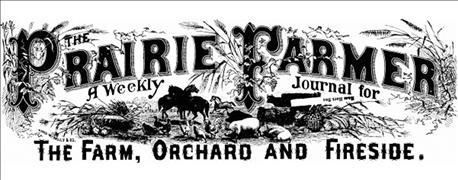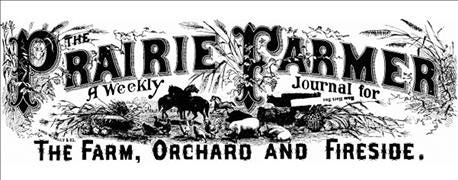
While several farmers found their home on farmland during the 1950s, many would lose that ground before the turn of the century. How do you summarize the 1980s farm crisis? Devastating? Game-changing? Eye-opening? Farmers were dealt an unthinkable situation during this era of agricultural production.
Yet in spite of these challenges, progress was still possible. Here’s a look.
1960-1969: New chemicals, revamped barns and demand for food

175 YEARS: Celebrating Prairie Farmer, 1841-2016
By the early 1960s, Prairie Farmer reported that more than 60% of corn acres were treated with Aldrin and heptachlor, two new insecticides launched in the late '50s. Unfortunately, northern and western corn rootworm quickly became resistant to the new insecticides. Sound familiar? Today, corn rootworm resistance comes in the form of trait resistance. The USDA pulled Aldrin and heptachlor from the market after traces of the chemicals were found in fish and other wildlife.
Farmers still had other tools, including herbicides, at their disposal: Furadan, Lasso, Sutan, Treflan, atrazine, Ramrod and Lorox. Many of these chemistries — perhaps under a different name or as part of a remix — are still recognized today.
Crop chemicals led to new management practices. Prairie Farmer began talking about saving money and soil with minimum tillage and no-till planting.
The hog industry also evolved through facility improvements. New hog confinements included slotted floors and manure lagoons. Hog prices were strong, and several farmers converted dairy barns to hog confinements.
A new pest, the alfalfa weevil, invaded the prairie state. Entomologists and farmers successfully suppressed the pest by importing natural predators and using new insecticides.
Yields, as in years prior, improved. And once again, the government called on farmers to produce even more to “fight the war on poverty.” And, again, farmers responded. Unfortunately, the result was yet another supply surplus. That surplus, coupled with the Vietnam War, resulted in lower commodity prices. At the same time, crop inputs went up.

A NEW TREND: All-cash leases became the talk of the town in 1969. Pros and cons were weighed heavily by economists, farmers and landowners alike.
1970-1979: Disease, soybean demand and infrastructure woes
Southern corn leaf blight threw farmers a curve ball in 1970, impacting yields across the Corn Belt. Corn breeders rushed to solve the issue with resistant hybrids.
A few years later, another unexpected twist sent the ag world into a tailspin. Record levels of U.S. feed grain and wheat were sold to the USSR. For the first time, consumers recognized the role farmers play in feeding the world, and grain prices responded to the demand.
At the same time, fuel consumption was up and domestic oil production was down. The OPEC oil embargo led to a drastic hike in oil prices, and farmers felt the pain of the 1974 energy crisis.
Yet commodity prices were stronger than ever. In one year, corn prices doubled from $1.52 to $3.02. Demand for soybeans shot up, and prices hit $11 a bushel in 1973. American farmers answered the call for demand and fed 22% to 25% of the world’s population in 1973.
Machinery got bigger and more powerful, with four-wheel-drive tractors and 12-row corn planters.
Yields kept climbing and American farmers produced 2.24 billion bushels of soybeans and 7.6 billion bushels of corn. The overwhelming amount of corn and soybeans put pressure on U.S. transportation systems. Infrastructure was simply not ready for that amount of grain.
As 1979 drew to a close, the USSR invaded Afghanistan.

SPOTTING INJURY: In the 1960s, more farmers leaned on herbicides and insecticides than ever before. In the 1970s, crop injury from herbicide carryover became an issue. Editors helped farmers recognize the symptoms and test for herbicide residue.
1980-1989: The farm crisis
Just days into the new decade, President Jimmy Carter ordered a grain embargo against the USSR in an attempt to pressure it out of Afghanistan. Farmers raised a red flag, knowing how this would impact demand. And they were right.
Ask any farmer about the 1980s and a few highlights, or lowlights, will quickly come to mind: high interest rates, rock-bottom crop prices, unpredictable weather and crashing land prices.
President Ronald Reagan, sworn into office in January 1981, pledged his support to farmers. He appointed Illinois native John Block as secretary of agriculture. Block led the PIK (Payment-in-Kind) Program — the largest federal government program in history. In an effort to reduce production, farmers were reimbursed for unused land. The inactive acres, coupled with the 1983 drought, sent prices up to $3.49 per bushel for corn and $7.74 per bushel for soybeans.
At the same time, fertilizer, chemical and machinery companies suffered. Plants were shut down and brands like Allis-Chalmers were bought out.
By 1985, the entire country knew farmers were in trouble. FarmAid brought 78,000 people to Champaign in an effort to raise money for farmers. People held rallies and protests urging Washington for significant changes in the 1985 Farm Bill.
The Reagan administration responded with a plan to reduce government support over time. The new farm bill included the Conservation Reserve Program and clauses to address erosion control. Throughout this era, Prairie Farmer wrote extensively about reducing soil erosion.
Prices stayed low. Debt continued to rise. President Reagan passed the Agricultural Credit Act in 1987 in an effort to save banks.
And then the drought of 1988 hit. Prices rebounded, but farmers had little to sell.
It didn’t happen overnight, but interest rates and land prices improved. Exports helped cattle, pork and dairy producers. Light was at the end of the long, dark tunnel.

SURVIVAL: Articles on recordkeeping, financial statements and cutting expenses flooded the pages of Prairie Farmer during the '80s. Editors discussed financial planning and PIK Program rules.
1990-1999: New tools, trade agreements, soil conservation and data
As farmers recovered from the 1980s, they walked away with a lesson: Farm operations are a business. Prairie Farmer editors focused content on recordkeeping, working with lenders, and understanding cost of production and return on investments.
New tools that would help farmers home in on inputs appeared in the '90s: yield monitors, GPS and more launched a wave of management tools that would come to be known as precision agriculture. Farmers would spend the next several years understanding this new data and applying it to their fields.
The launch of the internet and the World Wide Web in the mid-1990s marked a new era of connectedness on the farm, and farmers used it to harness information and communicate.
Trade became a big topic after the North American Free Trade Agreement was signed in 1994. Tariffs on products traded with Mexico and Canada were slowly eliminated through 2008. Today, Mexico is the second-largest importer of corn.
And in other big news from 1994, biotechnology entered the agricultural world: Flavr Savr tomatoes proudly carried a “Grown from genetically modified seeds” label. (Oh, how times would change!)
1996 saw the launch of Roundup Ready soybeans and Bt (Bacillus thuringiensis) crops, and rapid adoption followed. By 1999, 29 million acres of Bt corn, cotton and potatoes were grown globally. Roundup Ready soybeans created an easier way for farmers to adopt no-till practices, and Bt helped them defeat European corn borers — an insect that wreaked havoc on corn crops throughout the 1990s.
No-till and other soil conservation practices were regularly featured in Prairie Farmer, as was the extensive research and field trials surrounding biotech crops.

HIT THE PAUSE BUTTON: At the end of August 1999, a fax issued by Archer Daniels Midland caused chaos at elevators across the Corn Belt. Major export markets — Japan and Europe — wanted only non-GMO grain. Grain elevators had to separate and test non-GMO grain from GMO products.
About the Author(s)
You May Also Like




